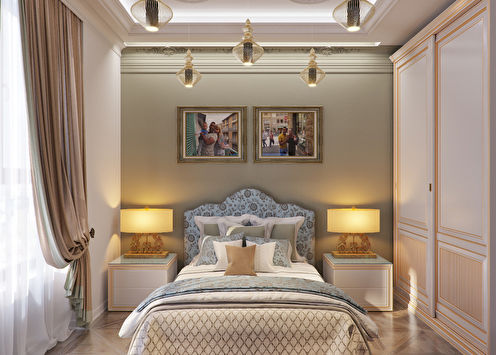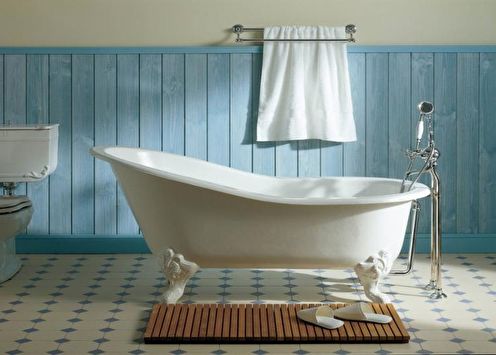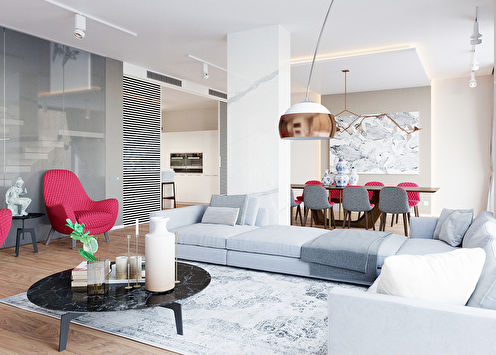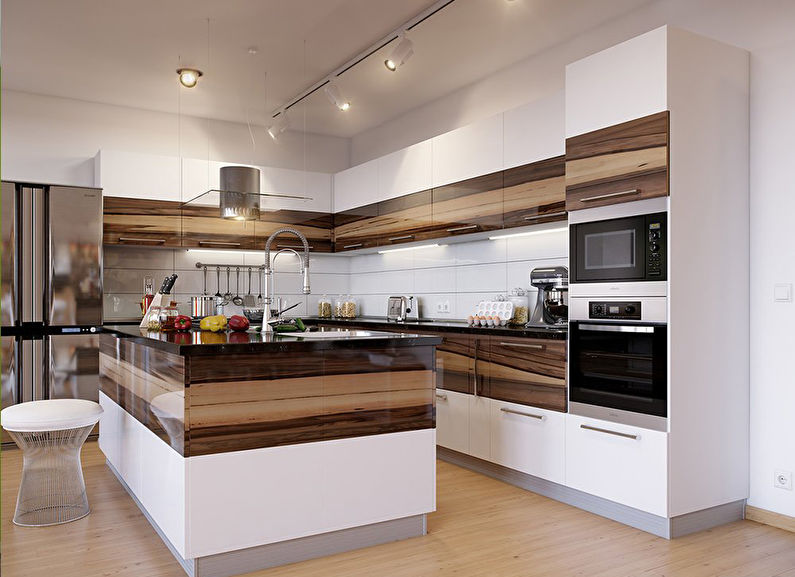
A modern kitchen should be convenient and comfortable, ergonomic. Great importance is attached to the choice of materials from which kitchen sets are made.
Properly selected furniture can transform the simplest layout. The design of the facade for the kitchen is selected taking into account the decoration of the walls, floor, ceiling. The color of the facade should be combined with the rest of the furniture and appliances.
To understand which kitchen is better, you need to consider the combination of the characteristics of the base and the outer coating. You can focus on the performance and durability of the facades according to customer reviews of IKEA and Leroy-Merlin, the advice of friends, relatives or acquaintances
Facade materials
To make the right choice, you need to know what materials are used for kitchen facades, what are their features. Most often, cabinets are made of composites - a mixture of wood chips with binders.
The basis is pressed plates. They are coated with a lining that simultaneously performs protective and decorative functions. Fewer headsets made of cherry, walnut, oak, veneered or without additional finish. They look, of course, very beautiful, but require special care, do not tolerate variable humidity, high temperatures.
The selection of materials is due to practicality, durability, ease of care. Furniture should retain its original appearance despite prolonged exposure to fumes, grease, and withstand wet cleaning using household chemicals. The more durable the base, the longer the headset will last without losing its appearance.
MDF
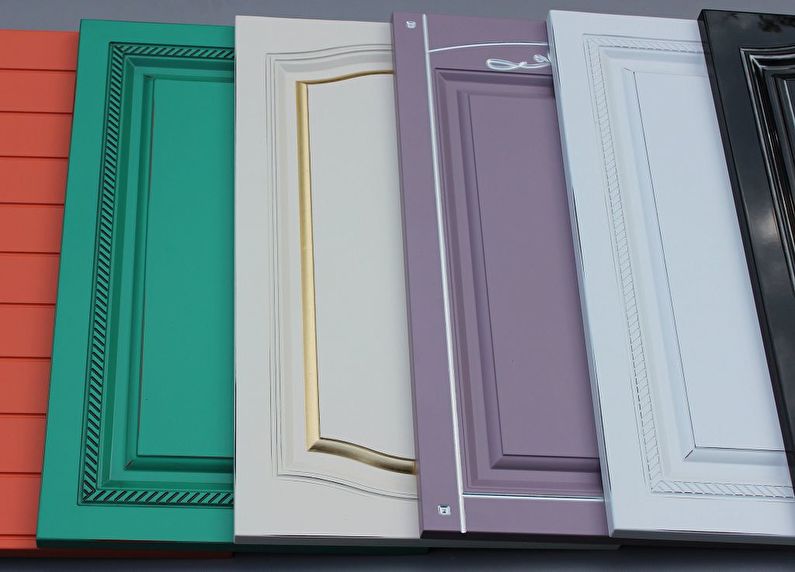
The name MDF (MediumDensityFibreboard) translates as, wood-pressed board. It is produced from sawn wood chopped into chips. Slivers are sieved, mixed with binder resins. The resulting mass is sent under a press, where it acquires hardness and density, not inferior in physical and mechanical properties to natural wood.
Pros:
- Strength. This design is very strong, withstands heavy weight and accidental impacts.
- Safety. In the manufacture of components used that do not emit harmful substances even when heated.
- Variety of shapes. Production technology allows you to create designs of any shape - straight, radius, curved.
Minuses:
- If the cladding is damaged, the base absorbs water and deforms.
- At the price, MDF facades are equal to the cost of solid wood cabinets.
Chipboard

Such boards are made from sawdust of a smaller fraction. The chips are thoroughly mixed with resins, pressed. The panels are sent for further processing - a protective coating is applied, with the help of patterns cut out to the desired size.
Pros:
- Availability. The price of the set depends on the basis and type of lining, but, as a rule, a kitchen made from chipboard costs 35-40% less than from MDF.
- Diverse design. Plates are available in all shades, with or without ornaments.
- Long period of operation. Subject to proper care, the kit will last for many years without repair or replacement.
Minuses:
- Panels are afraid of water, do not respond well to temperature changes.
- When heated, particleboard can release hazardous substances into the air.
- The chipboard has a looser structure, with inaccurate handling, the attachment points fail after 3-6 months.
Types of Coatings
Laminated

Lamination is called melamine cladding. It consists of paper impregnated with resin and varnished. It turns out a smooth moisture resistant surface. This is one of the most economical options. Sometimes such panels are used for cutting not only the front part, but also the body.
Pros:
- Moisture resistance.Lamination tolerates frequent cleaning, does not collapse under the influence of detergents.
- Decorative properties. Plates are produced with imitation of beech, alder, birch, as well as plain, with geometric patterns, with floral or floral ornaments.
Minuses:
- Lamination is damaged by abrasive cleaners - scuffs remain.
- Melamine begins to break down when the temperature rises. Therefore, the walls of the cabinets with lamination installed in the thermal zones must be protected by aluminum plates.
Enamel

To cover the panels with enamel they are leveled - primed. After the primer dries, several layers of paint are applied. Before applying each new layer, the previous one is dried and ground. The final stage is the application of enamel. This method provides bright color-resistant shades. A perfectly flat surface does not lose its beauty and strength during the entire service life.
Benefits:
- Facades are available in various textures - glossy or matte, with a metallic effect.
- Furniture does not require complicated maintenance. To remove dirt, you can use any non-abrasive detergent.
Disadvantages:
- Fingerprints can be seen on the gloss, so you will have to wipe the cabinets daily.
- Under the action of ultraviolet light, the paint loses its brightness, burned spots remain.
- On enamel, due to impacts, chips appear.
PVC
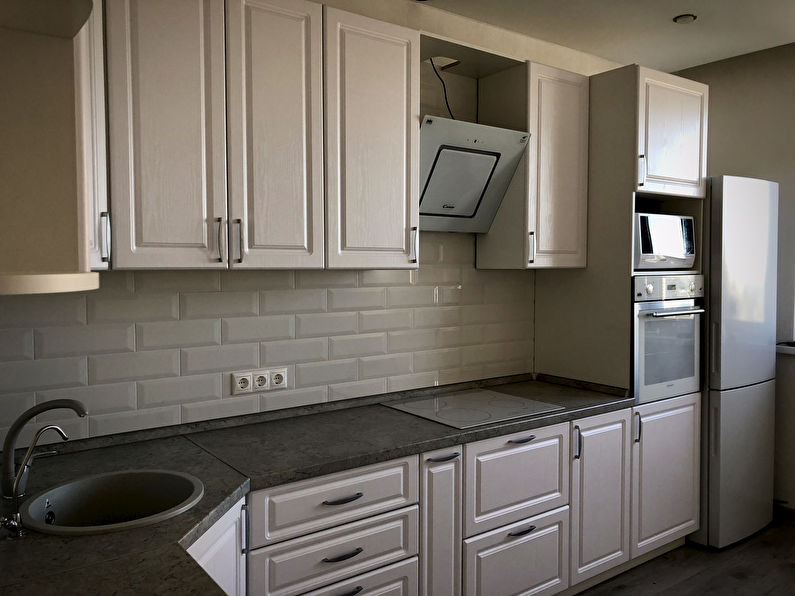
As the outer cladding, a polymer film is used, which can be any shade, lacquered or pearlescent, with a pattern or plain.
Benefits:
- In this way, straight, angled bent and milled parts can be machined.
- High resistance to abrasion, chemically active environments.
- Dirt and greasy stains are well washed off the film.
- Large selection of colors.
Disadvantages:
- Next to the oven or sink, PVC can peel off from the base.
- The film easily forms scratches.
- The period of operation is 4-6 years.
Plastic
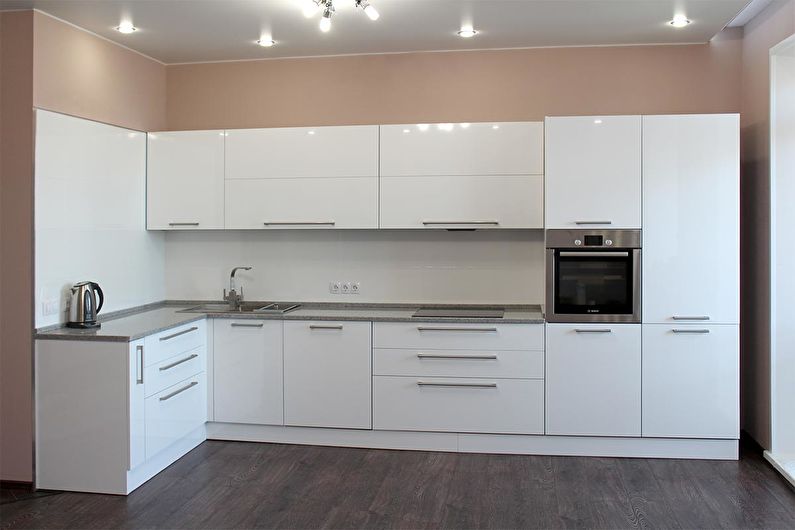
Plastic facades are actually made of chipboard or MDF, and HPL is used as the outer layer. This is the designation of laminated material from plastic and kraft paper. They are glued together under high pressure, coated with a transparent melamine resin on top. Plastic sheets or rolls are glued to wooden panels.
The ends are processed using postforming technology. It turns out a seamless coating with high waterproof properties. If you want to make sure that the ends differ in color or texture, then they are covered with edges made of acrylic or ABS plastic, aluminum.
Pros:
- Increased resistance to mechanical stress, moisture, organic and chemical substances.
- Finishing does not fade in direct sunlight, preserves the brightness of shades.
- Stabilized plastic does not emit toxic compounds, it is quickly washed from fat.
Minuses:
- Any dirt is clearly visible on the gloss, so you need to constantly wipe it with a dry cloth.
- The doors on the inside are white.
Wood
Natural wood is a high-strength, environmentally friendly material. Such cabinets can be paneled or made of solid wood. In the first case, they are completely made of wood. Paneled do on a different principle. A decorative element made of chipboard or glass is inserted into the frame structure. If a panel made of chipboard or MDF is veneered, then it does not differ from natural wood.
Benefits:
- The set looks solid and elegant, it is possible to decorate with carvings, stained-glass windows, plates, openwork inserts.
- The mass of cabinets is reduced due to lighter and thin panels, the load on the walls is reduced.
- In case of accidental damage, the doors can be restored and restored.
Disadvantages:
- Soft rocks can change color under the influence of ultraviolet radiation.
- The tree absorbs all the smells, swells from water, steam.
- Using products containing chlorine or abrasives, you can damage the structure and spoil the color.
Metal
Metal facades are made of stainless steel, aluminum alloys. They are very strong and durable, they are easy to care for. Shiny chromed surfaces blend perfectly with glass, artificial or natural stone. Metal kitchens are most often installed in apartments with an interior in a modern style - urbanism, minimalism or a loft.
Among the advantages of steel or aluminum kitchens, it is worth noting heat resistance, fire safety, corrosion resistance, long service life. The only negative can be considered that the metal is cold to the touch, it is not always pleasant to touch it. On metal facades handprints, stains from wet rags, dried drops of water are very noticeable. Therefore, they must be constantly rubbed.
